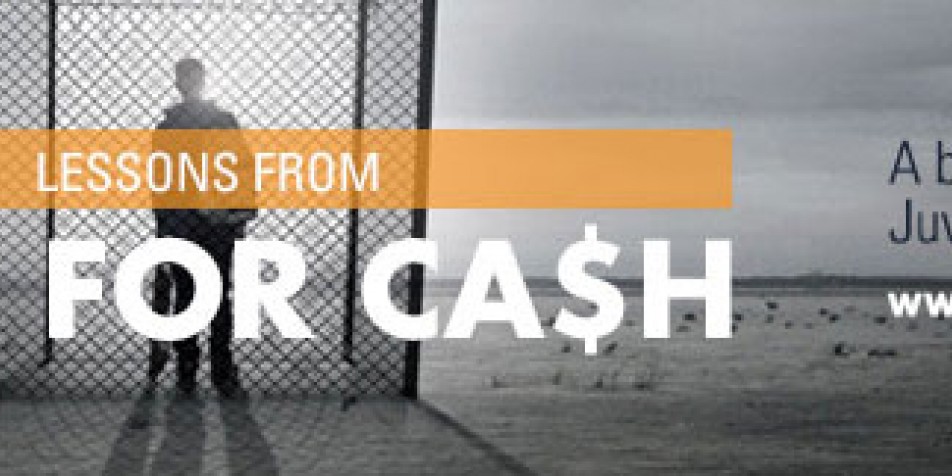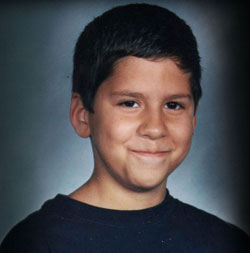Lessons from "Kids for Cash," Part 7: Adolescents are Different from Adults

This is the seventh blog post in our Lessons from "Kids for Cash" blog series, which explores some of the critical issues facing youth today that were brought to light by the "kids-for-cash" scandal and are depicted in the new film "Kids for Cash." "Kids for Cash" is currently playing in theaters across the country.
“What were you thinking?!” As former teenagers, we’ve all been asked this question—and probably more than once.
Teens act carelessly and impulsively for several reasons. First and foremost, numerous scientific studies (like the ones found here and here) confirm that teenaged brains are simply not mature, and key functional areas of their brains—primarily the frontal lobe, where decision-making and concentration are governed —are not fully developed until early adulthood. Kids are also much more susceptible to peer pressure than adults. They don’t recognize risks, and when they do, they evaluate risks differently from adults.
 When he exchanged heated words with a mother at a school bus stop, 12-year-old Justin was acting impulsively and carelessly—in other words, like a typical kid. Yet his behavior was reported to the police, and he was charged with terroristic threats.
When he exchanged heated words with a mother at a school bus stop, 12-year-old Justin was acting impulsively and carelessly—in other words, like a typical kid. Yet his behavior was reported to the police, and he was charged with terroristic threats.The stories of the teens involved in the Luzerne County “kids-for-cash” scandal echo these findings. Without thinking about the consequences, 15-year-old Hillary created a satirical MySpace page about her assistant high school principal, because she thought it would be “hilarious”; 12-year-old Justin exchanged heated words with a mother at a school bus stop, without thinking that his words might be perceived as offensive or potentially threatening; and 13-year-old Amanda reacted angrily and impulsively when taunted by a former friend, prompting a fight.
By the time we’re adults, we’ve learned—from mistakes like these—to think twice before acting carelessly and impulsively and foresee the potential consequences. But teens are still maturing, still learning. A wise society gives them room to learn from their mistakes.
It seems so obvious that kids are different from adults: we know this from looking back at our own adolescence and at how much we’ve changed since then, both physically and emotionally. We know we’ve matured and our perspective is different. The challenge is persuading lawmakers, our courts, our schools and our communities to recognize these differences, acknowledge them, and stop criminalizing simple acts of adolescence simply because they make us angry.
At the most extreme end of the justice system, where kids commit serious offenses and are subjected to the harshest punishments, the United States Supreme Court responded by connecting developmental research to justice policy. In 2004, the Roper v. Simmons case challenged the constitutionality of the death penalty for juveniles before the United States Supreme Court. Juvenile Law Center and other children’s rights advocates joined together with the medical, scientific, and international law communities to write amicus (“friend-of-the-court”) briefs to the Supreme Court, arguing that kids are different from adults and should not be punished as harshly for the same crimes (view our brief in Roper here). In their briefs, the American Medical Association and the American Psychological Association referenced studies that noted three important findings about youth:
- Youth are immature and fail to demonstrate mature judgment
- Youth are more susceptible to peer pressure, particularly negative peer pressure
- Youth is a transient characteristic, providing adolescent offenders with a greater capacity than adult offenders for rehabilitation and reformation of their characters
|
Adults have learned to think twice before acting carelessly and impulsively and foresee the potential consequences. But teens are still maturing, still learning. A wise society gives them room to do so. |
The U.S. Supreme Court’s opinion in Roper, issued in 2005, cited these findings as a major reason for declaring the juvenile death penalty to be unconstitutional: The Court stated that “the susceptibility of juveniles to immature and irresponsible behavior means ‘their irresponsible conduct is not as morally reprehensible as that of an adult’” and “from a moral standpoint it would be misguided to equate the failings of a minor with those of an adult, for a greater possibility exists that a minor’s character deficiencies will be reformed.”
This landmark ruling that “kids are different” is the cornerstone of Juvenile Law Center’s arguments on behalf of children in a variety of settings, and has paved the path to justice for kids in other major cases involving harsh sentences and police interrogation practices (see Miller v. Alabama; J.D.B. v. North Carolina; Graham v. Florida).
Despite this affirmation by our nation’s highest court, and despite the fact that studies show that most youth who are arrested for crimes—even serious ones—do not go on to become repeat offenders in adulthood, kids across the country are still being harshly punished for “crimes” that amount to nothing more than acts of teenage immaturity.
How Can We Solve This Problem?
1. Bring an end to zero-tolerance policies in schools that push kids into the juvenile justice system for minor “crimes.” Juvenile Law Center continues to advocate for legislation and policies that take kids’ immaturity and youthfulness into account and prohibit school referrals to the juvenile justice system for minor misconduct. Schools need to take responsibility for discipline, and not abdicate that role to law enforcement.
2. Promote common-sense responses to youth who have committed crimes, taking their emotional immaturity into account. A recent Annie E. Casey Foundation report found that sending kids to secure juvenile detention facilities and other out-of-home juvenile justice system placements does not reduce the chance that they will reoffend – in fact, it actually makes reoffending more likely. This approach decreases public safety, is enormously costly for taxpayers, and most critically, exposes those kids to high levels of violence and abuse.
Many youth and families can benefit more by participating in community-based programs that address family functioning, help address emotional and mental health needs, and allow them to stay connected to family, friends, and school.
3. Ensure that the juvenile justice system maintains its rehabilitative focus, so that kids can successfully rejoin their families and communities. For the small percentage of kids who have committed the harshest crimes and must be involved in the juvenile justice system, the system’s focus should be on rehabilitating them to reduce the risk of reoffending—both to safeguard their futures and to keep the public safer. The system should guide these youths’ maturation, and help them develop the capacities they will need to be productive adults.